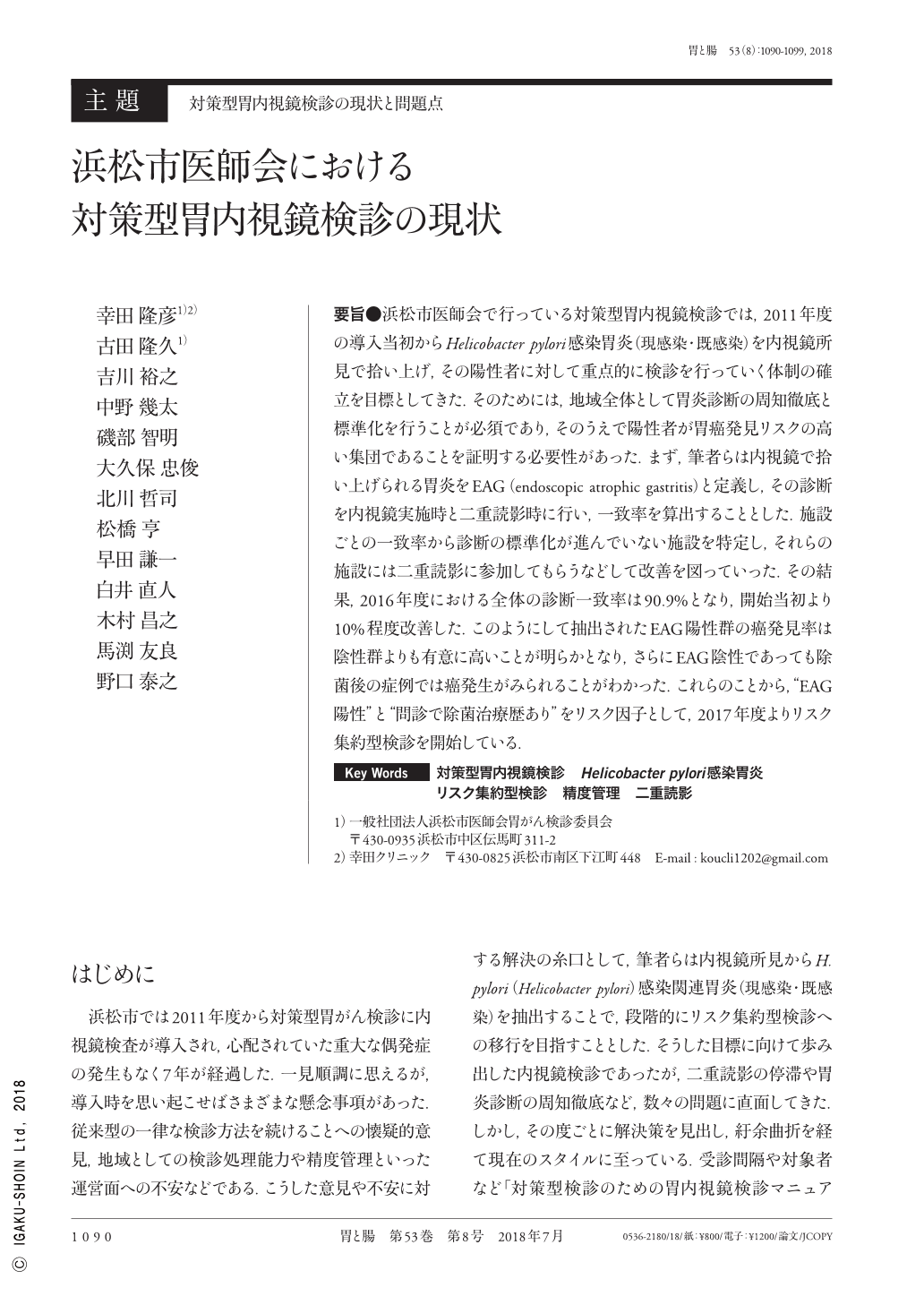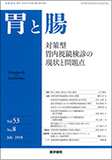Japanese
English
- 有料閲覧
- Abstract 文献概要
- 1ページ目 Look Inside
- 参考文献 Reference
- サイト内被引用 Cited by
要旨●浜松市医師会で行っている対策型胃内視鏡検診では,2011年度の導入当初からHelicobacter pylori感染胃炎(現感染・既感染)を内視鏡所見で拾い上げ,その陽性者に対して重点的に検診を行っていく体制の確立を目標としてきた.そのためには,地域全体として胃炎診断の周知徹底と標準化を行うことが必須であり,そのうえで陽性者が胃癌発見リスクの高い集団であることを証明する必要性があった.まず,筆者らは内視鏡で拾い上げられる胃炎をEAG(endoscopic atrophic gastritis)と定義し,その診断を内視鏡実施時と二重読影時に行い,一致率を算出することとした.施設ごとの一致率から診断の標準化が進んでいない施設を特定し,それらの施設には二重読影に参加してもらうなどして改善を図っていった.その結果,2016年度における全体の診断一致率は90.9%となり,開始当初より10%程度改善した.このようにして抽出されたEAG陽性群の癌発見率は陰性群よりも有意に高いことが明らかとなり,さらにEAG陰性であっても除菌後の症例では癌発生がみられることがわかった.これらのことから,“EAG陽性”と“問診で除菌治療歴あり”をリスク因子として,2017年度よりリスク集約型検診を開始している.
Through organized endoscopic screening conducted at the Hamamatsu-city medical association, we selected individuals with H. pylori(Helicobacter pylori)-related gastritis and aimed to establish a screening program to intensively examine those individuals. It is necessary to prove that the positive group had a high risk for gastric cancer after confirming and standardizing the diagnosis of gastritis. We defined gastritis as EAG(endoscopic atrophic gastritis).” Furthermore, the diagnosis was conducted during the primary and secondary screening. We also calculated the concordance rate of each diagnosis. We analyzed the rate for each facility and tried to improve it by allowing the endoscopist at the facility with a low concordance rate to participate in the secondary screening. The overall concordance rate was 90.9% in 2016, which is approximately 10% better than that in 2011. As a result, the cancer detection rate of the EAG positive group was significantly higher than that of the negative group. Most of the gastric cancer cases in the EAG negative group were cases reported after H. pylori was eradicated. Based on these findings, the risk-intensive screening was initiated in 2017 with two risk factors:“EAG positive” and “experienced H. pylori-eradication treatment by history-taking.”

Copyright © 2018, Igaku-Shoin Ltd. All rights reserved.


